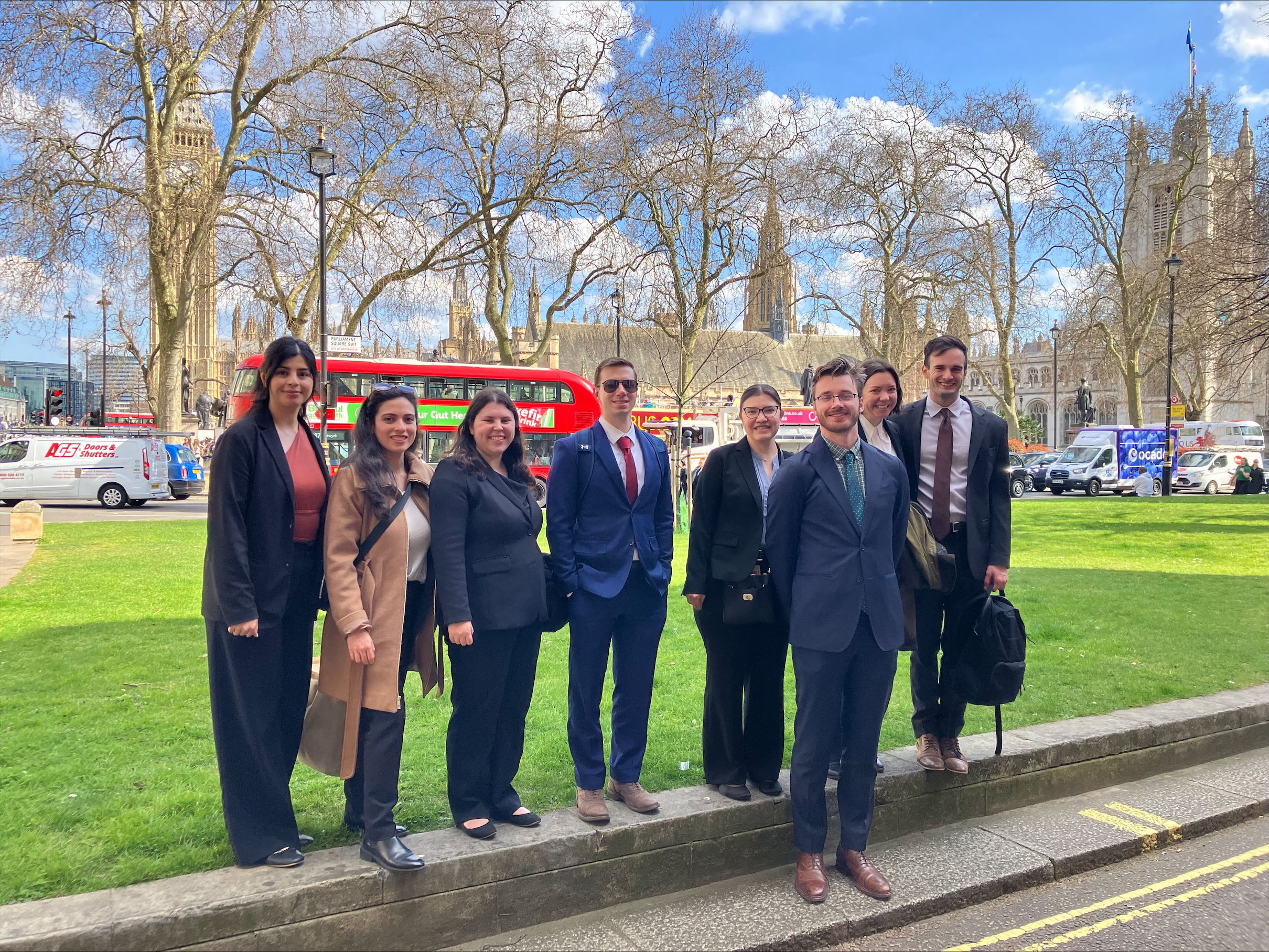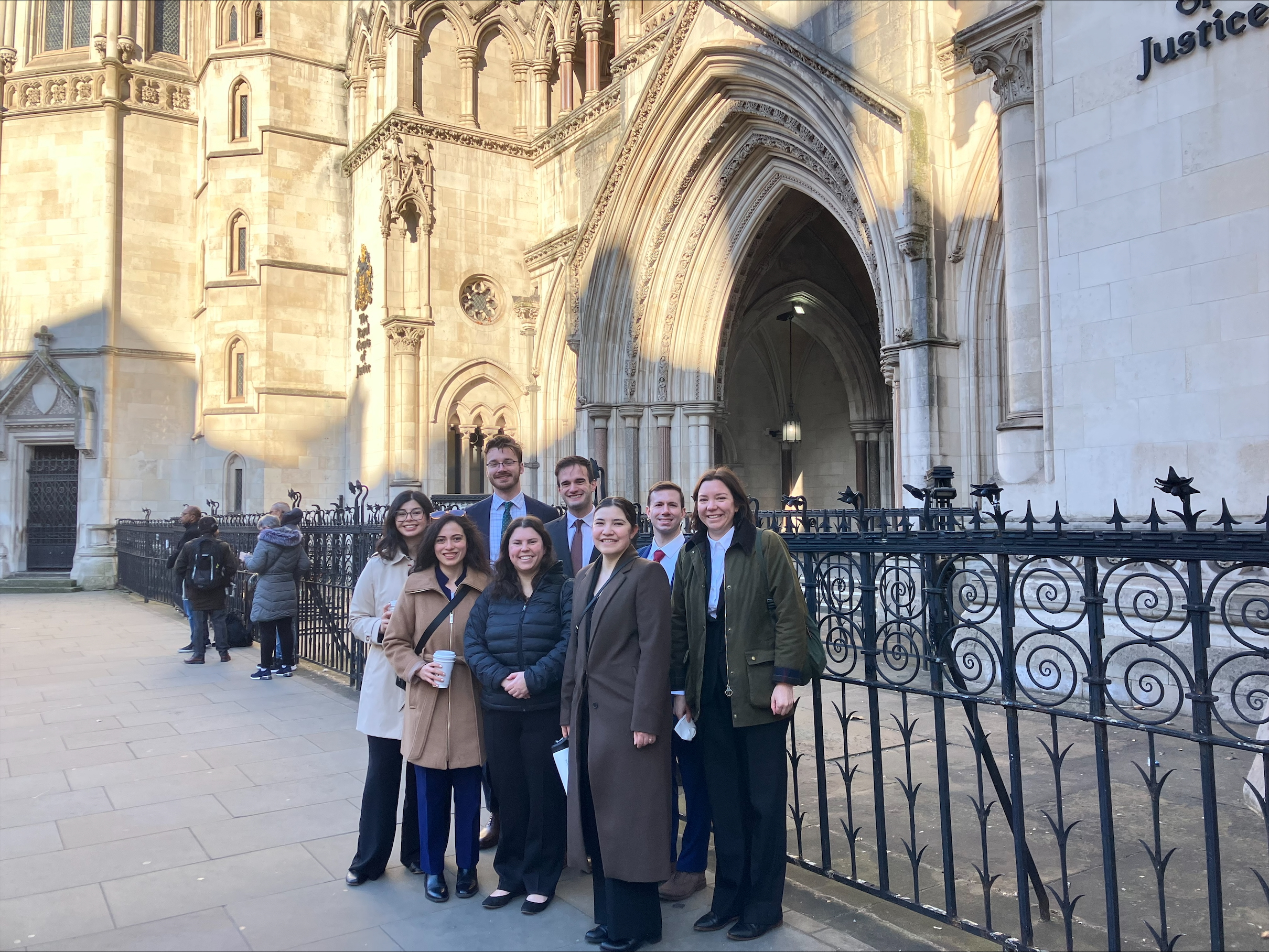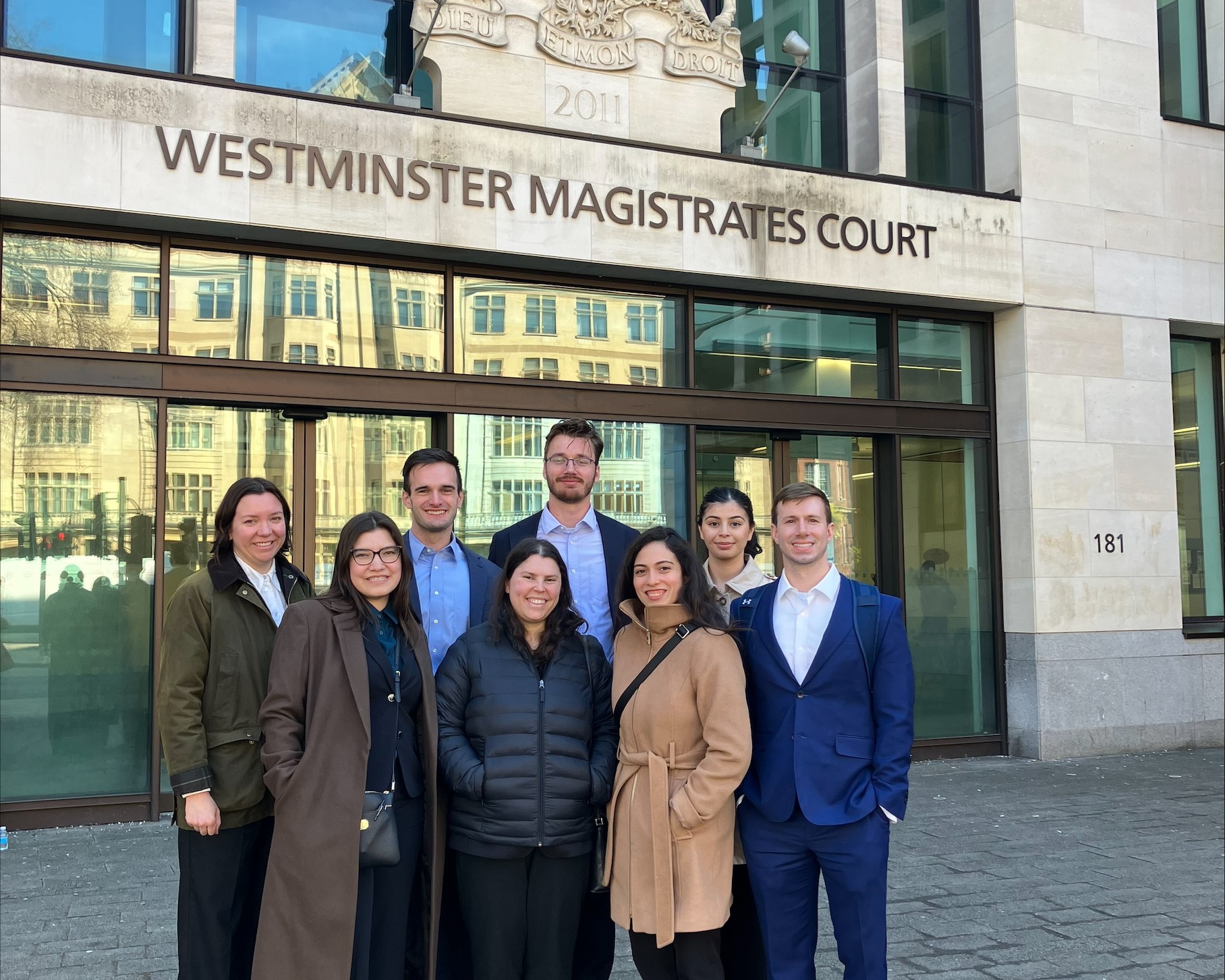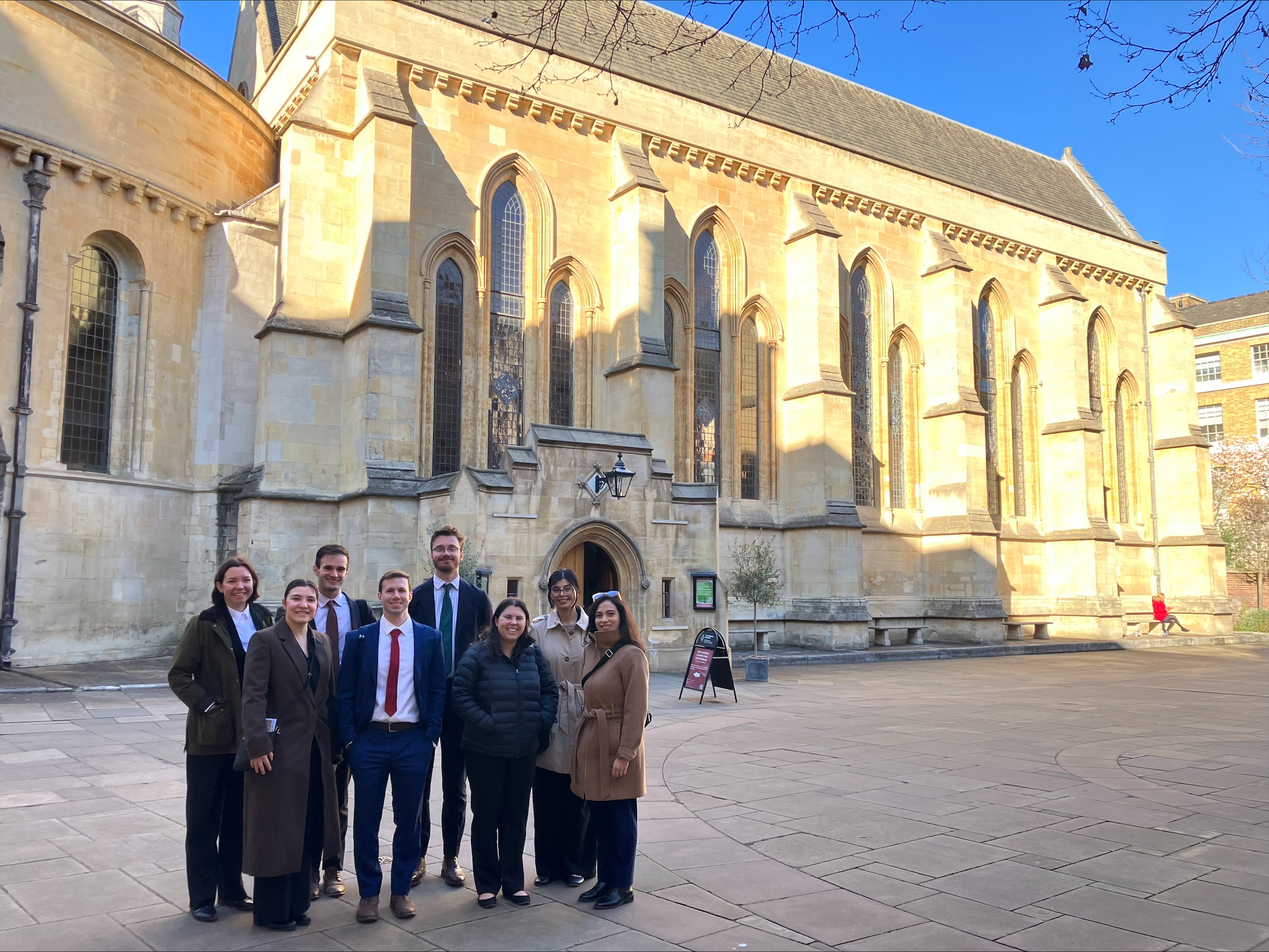Yale Students Explore the UK’s Legal Landscape

What happens when legal theory meets the weight of centuries-old tradition? For a group of Yale students, the answer came alive in London’s courtrooms, chambers, and cobblestone streets. Over spring break, students in Ruth Coffey’s Comparative Criminal Law class stepped out of the classroom and into the heart of the British legal system – an opportunity made possible by the MacMillan Center’s Course Travel Abroad grant.
In the weeks leading up to the trip, students delved into the architecture of criminal justice in England and Wales, drawing critical comparisons with systems in the U.S. and around the world. Their time in London served as a living extension of their classroom discussion, as they visited courts and met with lawyers, judges, and other legal professionals to better understand the British legal system.
The eight-student group began their trip with a visit to the Central Criminal Court -- known as the Old Bailey – one of London’s most renowned legal institutions. Experiences like this brought the class’s comparative approach to life.
“This memory was distinctive to me because I don’t think I have ever seen any form of commemoration for prison reformers in the U.S.,” said Diane, YLS ’27, reflecting on one of the statues in the Old Bailey, which honors the prison reformer Elizabeth Fry.

Throughout the trip, students were welcomed by a series of distinguished British legal figures, including Mrs. Justice Cheema-Grubb, a High Court Judge and Judge in Charge of the Terrorism List, and Master Alix Beldam, the Registrar of Criminal Appeals. Through a talk and Q&A session with Beldam and a senior lawyer from the Court of Appeals Office, students gained insight into the role and workings of the Court of Appeal Criminal Division.
Their exploration continued at Temple, a historic legal district home to two of the Inns of Court and located just across from the Royal Courts of Justice. Later, the class also toured the UK Supreme Court after their fireside chat with Cheema-Grubb J.
“The juxtaposition of history and tradition between the two jurisdictions has given me a lot to think about when it comes to the best way to honor history and tradition in the legal field while pursuing modern visions of fairness and justice,” said Kayleigh, YLS ‘26.
At the Westminster Magistrates’ Court, the class attended morning hearings across various courtrooms.
“In some cases, elderly or disabled defendants struggled to hear the directions of the district judge, magistrate, or clerk through the thick glass of the dock walls,” said Bobby, YLS ’27.

Coffey noted the deeper perspective students developed through these experiences:
“A theme throughout the seminar has been the interconnection between law and society, and seeing the courts in action in London, and meeting the people to hear not only what they do but why they think they do it does appear to have deepened the understanding and appreciation for the importance of cultural setting in analyzing law comparatively.”
Students returned from London with lasting key takeaways, highlighting the value of the MacMillan Center’s course travel grants:
“Seeing the English system in action helped me see my own more clearly. It reminded me that law is lived in rooms, spoken in rituals, and maintained by people who ask, each day, how they can be useful,” said Jessica, YLS ’25.
Jarek, YLS ’25, remarked, “Without this trip the class would not have had the same impact. Physically seeing and questioning the legal actors in their home environment created an unmatched opportunity.”
